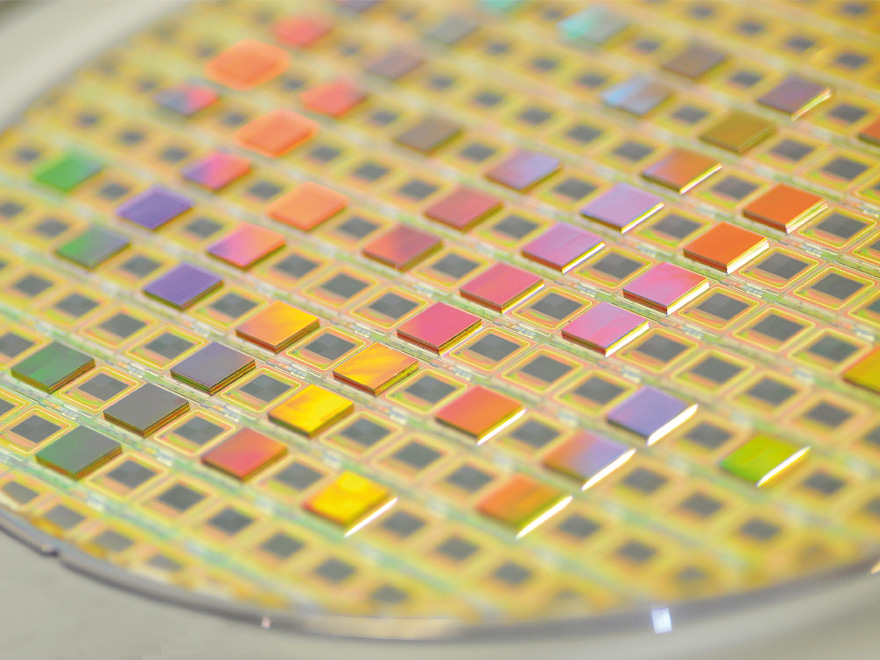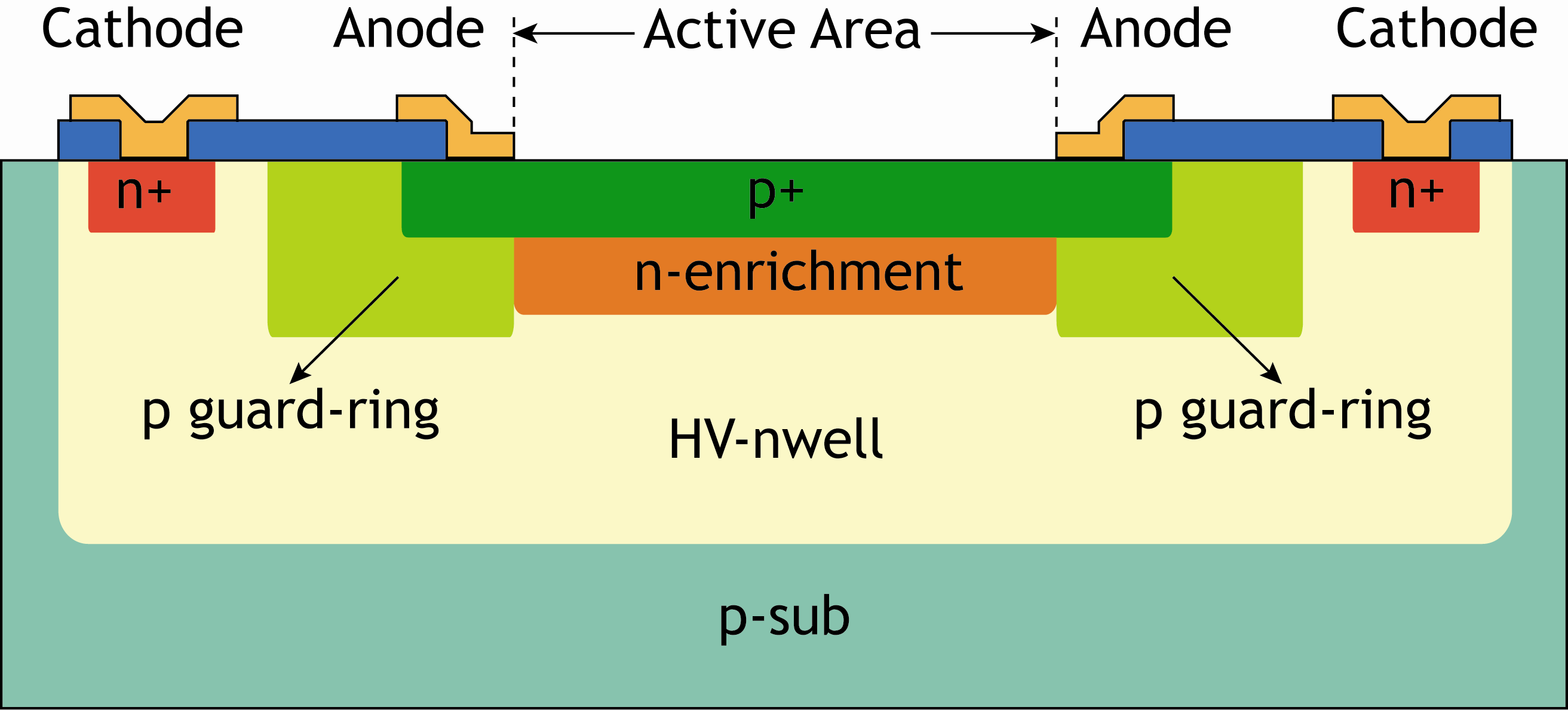As a competent and reliable provider of microelectronic devices and technologies, Fraunhofer IMS offers customized solutions in particular for photo detectors and image sensors. Fraunhofer IMS fulfils specific sensor requirements such as spectral sensitivity or quantum efficiency. For example, sensitive Single Photon Avalanche Diodes (SPADs) with customer specific properties (e.g. breakdown voltage) or “Opto” modules (e.g. UV transparent passivation) are possible. With the aid of special processes, such as a planarized passivation, the integration of additional features like optical filters is enabled.
Sensitive Single Photon Avalanche Diodes (SPADs)
Compared to conventional photodiodes, SPADs operate above breakdown in the so-called Geiger mode. This allows the diodes to produce a considerably larger output signal even when the detected light is of low intensity. Since the avalanche effect responsible for the signal amplification is very fast, the timing resolution of SPADs is in the picosecond range, which is why SPADs are widely used in photon time-of-arrival measurements and direct time-of-flight systems.
SPADs for LiDAR
Because of their unique characteristics, SPAD-based LiDAR sensors can be used for a multitude of different applications in various fields. Applications in the automotive field include Advanced Driver Assistance Systems (ADAS) and fully autonomous vehicles. Additional applications of LiDAR systems include traffic monitoring, people counting, and gesture recognition. Logistics can benefit from employing LiDAR techniques for fast shape and volume measurement of bulk goods, while production facilities can use this technology to monitor manufacturing processes. LiDAR systems employing IR illumination can also be operated in the dark and are particularly suitable for property surveillance. If the intended application does not require any spatial resolution, as for example distance and speed measurement with a single laser spot, a large detector area with SPADs elements connected in parallel can increase the range and decrease the needed laser power.
Other applications of SPADs
Because of their high sensitivity, good timing resolution, high dynamic range, and comparatively low voltage requirement, many applications can benefit from the utilization of SPAD-based sensors.
Such applications include, among others:
- low-light vision
- time-correlated spectroscopy
- fluorescence lifetime microscopy
- positron emission tomography.

